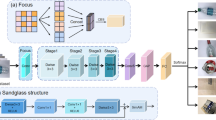Abstract
Electronic garbage, or “e-waste,” may be hazardous to the environment due to its composition. Environmental scientists are focusing more on the dangerous heavy metal pollution in e-waste sites due to how deadly and persistent it is. The bulk of electronic waste has been disposed of improperly due to poor handling practises that compromise safety and environmental protection. In order to anticipate the composition of e-waste and metal, a Long Short-Term Memory (LSTM) with attention layer technique was proposed. Data from the E-waste recycling facility is used, and it has been preprocessed, to exclude extreme points that usually appeared when using alternative fuels. The preprocessed data is then obtained by the testing and training operations. Since the gates allow the input characteristics to flow through the hidden layers without modifying the output, the proposed LSTM network is simple to optimise. By examining the well-known feature maps from the prediction branch, the attention layer makes advantage of the correlation between the class labels.
Access this chapter
Tax calculation will be finalised at checkout
Purchases are for personal use only
Similar content being viewed by others
References
Gundupalli, S.P., Hait, S., Thakur, A.: Classification of metallic and non-metallic fractions of e-waste using thermal imaging-based technique. Process. Saf. Environ. Prot.Saf. Environ. Prot. 118, 32–39 (2018)
Siddiqi, M.M., Naseer, M.N., Abdul Wahab, Y., Hamizi, N.A., Badruddin, I.A., Hasan, M.A., ZamanChowdhury, Z., Akbarzadeh, O., Johan, M.R., Kamangar, S.: Exploring E-waste resources recovery in household solid waste recycling. Processes 8(9), 1047 (2020)
Liu, J., Chen, X., Shu, H.Y., Lin, X.R., Zhou, Q.X., Bramryd, T., Shu, W.S., Huang, L.N.: Microbial community structure and function in sediments from e-waste contaminated rivers at Guiyu area of China. Environ. Pollut.Pollut. 235, 171–179 (2018)
Jiang, B., Adebayo, A., Jia, J., Xing, Y., Deng, S., Guo, L., Liang, Y., Zhang, D.: Impacts of heavy metals and soil properties at a Nigerian e-waste site on soil microbial community. J. Hazard. Mater. 362, 187–195 (2019)
Debnath, B., Chowdhury, R., Ghosh, S.K.: Sustainability of metal recovery from E-waste. Front. Environ. Sci. Eng. 12(6), 1–12 (2018)
Gundupalli, S.P., Hait, S. and Thakur, A.: Thermal imaging-based classification of the E-waste stream
Vieira, B.D.O., Guarnieri, P., Camara Silva, L., Alfinito, S.: Prioritizing barriers to be solved to the implementation of reverse logistics of e-waste in brazil under a multicriteria decision aid approach. Sustainability 12(10), 4337 (2020)
Kyere, V.N., Greve, K., Atiemo, S.M., Amoako, D., Aboh, I.K., Cheabu, B.S.: Contamination and health risk assessment of exposure to heavy metals in soils from informal e-waste recycling site in Ghana. Emerging Sci. J. 2(6), 428–436 (2018)
de Oliveira Vieira, B., Guarnieri, P., e Silva, L.C., Alfinito, S.: Prioritizing barriers to be solved to the implementation of reverse logistics of E-waste in Brazil under a multicriteria decision aid approach. Sustainability 12(10), 4337 (2020)
Cucchiella, F., et al.: Recycling of WEEEs: an Economic assessment of present and future e-waste streams. Renew. Sustain. Energy. Rev. 51, 263–272
Kosai, S., Kishita, Y., Yamasue, E.: Estimation of the metal flow of WEEE in Vietnam considering lifespan transition. Resour. Conserv. Recycl.. Conserv. Recycl. 154, 104621 (2020)
Author information
Authors and Affiliations
Corresponding author
Editor information
Editors and Affiliations
Rights and permissions
Copyright information
© 2023 The Author(s), under exclusive license to Springer Nature Singapore Pte Ltd.
About this paper
Cite this paper
Raghavendra, T.S., Nagaraja, S.R., Mohan, K.G. (2023). LSTM with Attention Layer for Prediction of E-Waste and Metal Composition. In: Bhateja, V., Yang, XS., Ferreira, M.C., Sengar, S.S., Travieso-Gonzalez, C.M. (eds) Evolution in Computational Intelligence. FICTA 2023. Smart Innovation, Systems and Technologies, vol 370. Springer, Singapore. https://doi.org/10.1007/978-981-99-6702-5_50
Download citation
DOI: https://doi.org/10.1007/978-981-99-6702-5_50
Published:
Publisher Name: Springer, Singapore
Print ISBN: 978-981-99-6701-8
Online ISBN: 978-981-99-6702-5
eBook Packages: Intelligent Technologies and RoboticsIntelligent Technologies and Robotics (R0)




